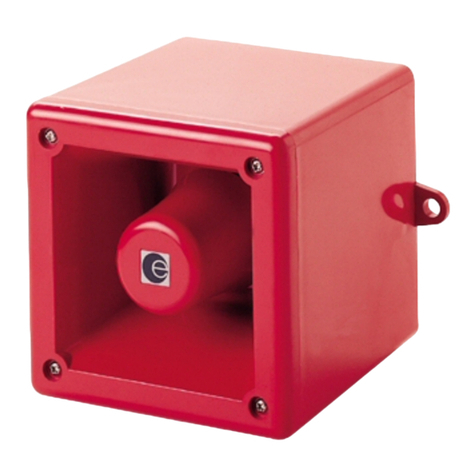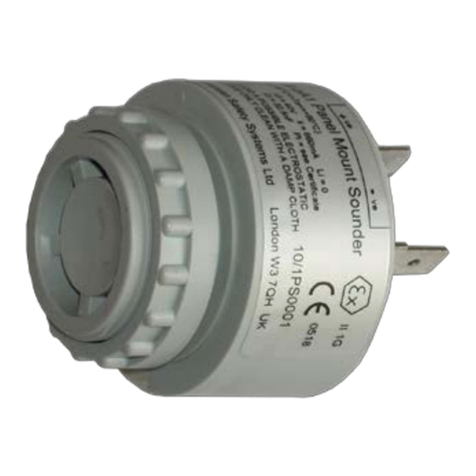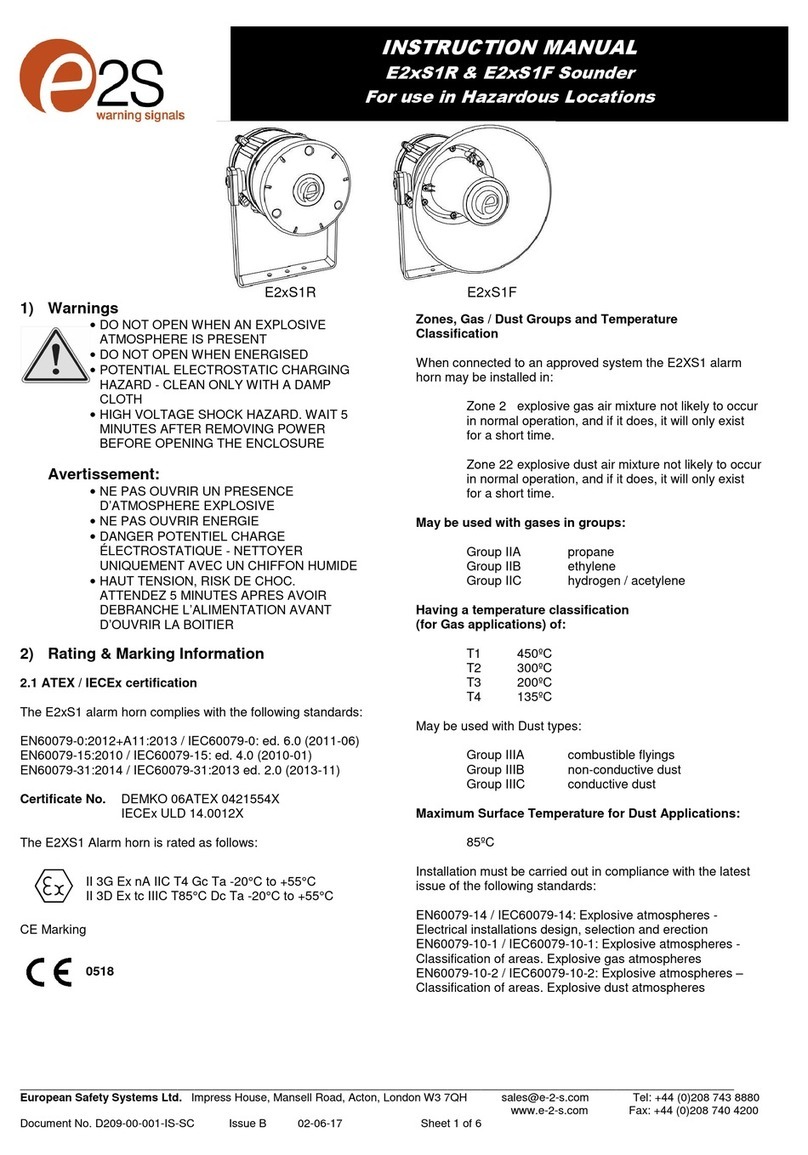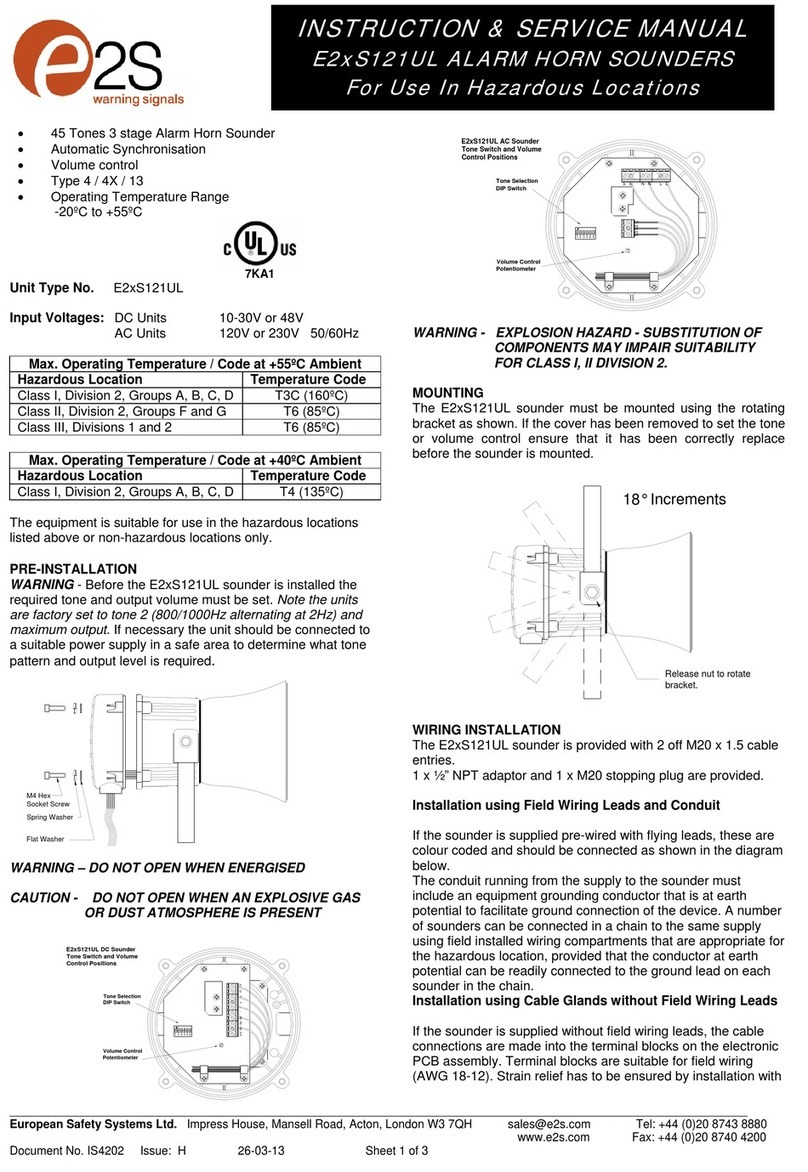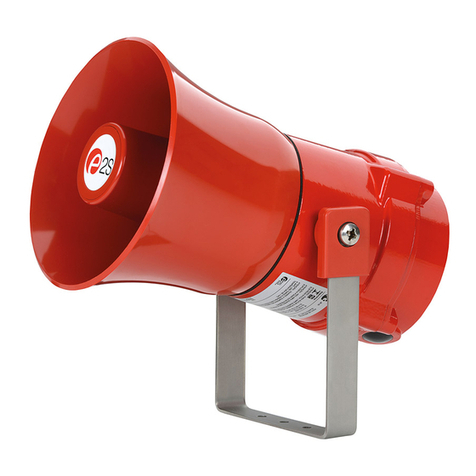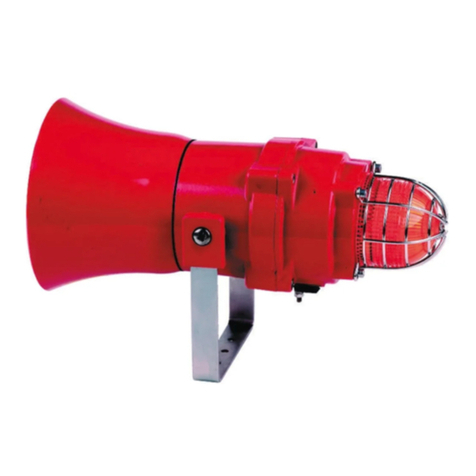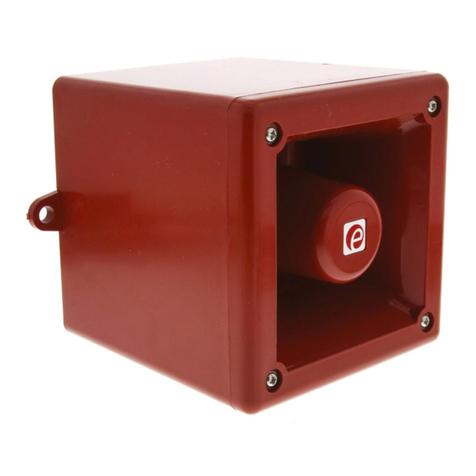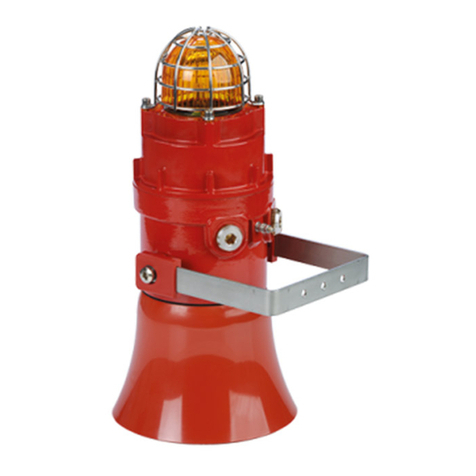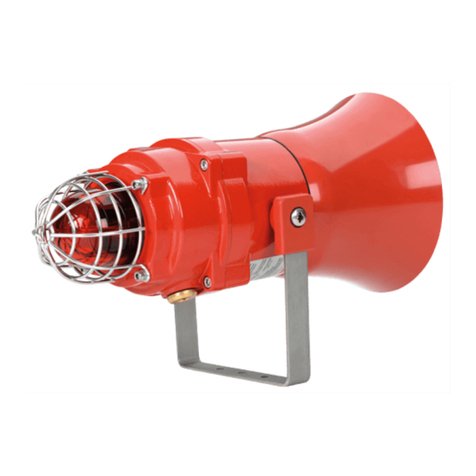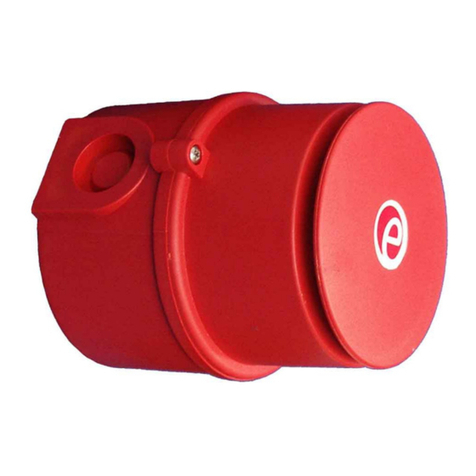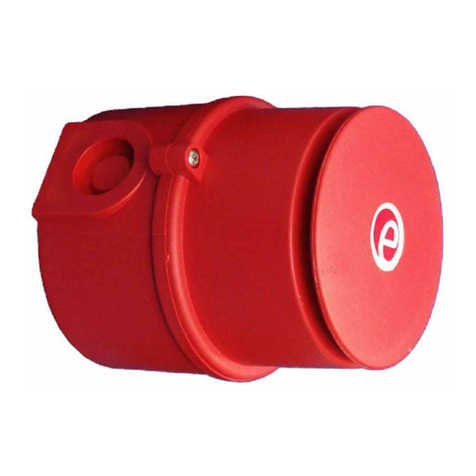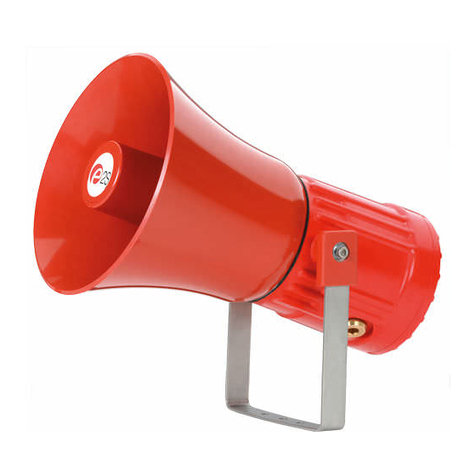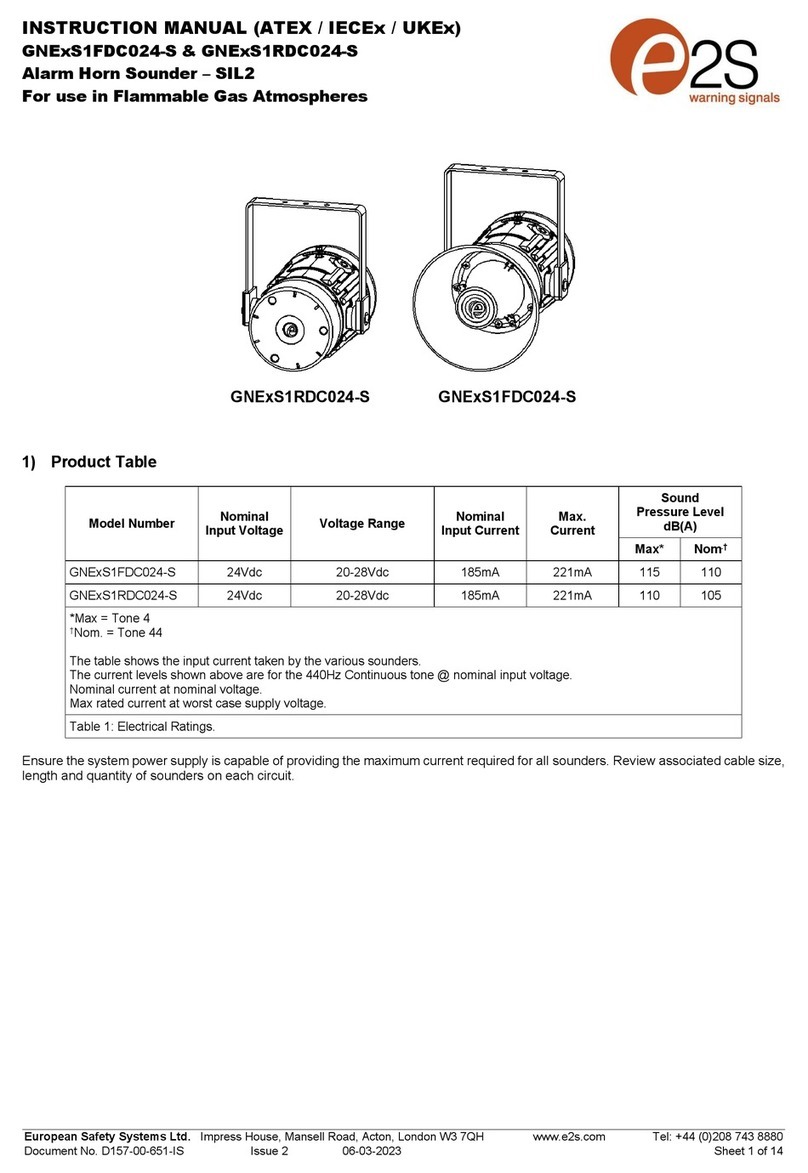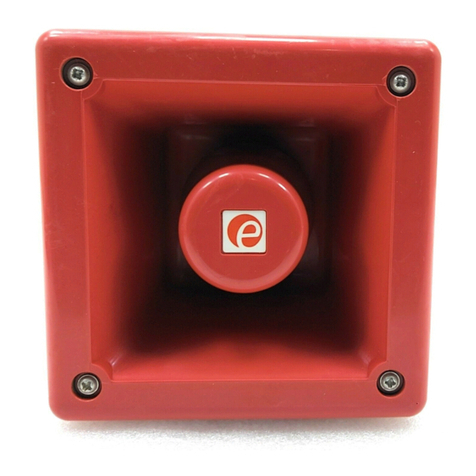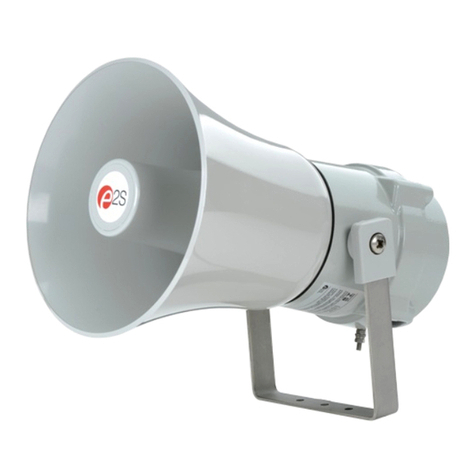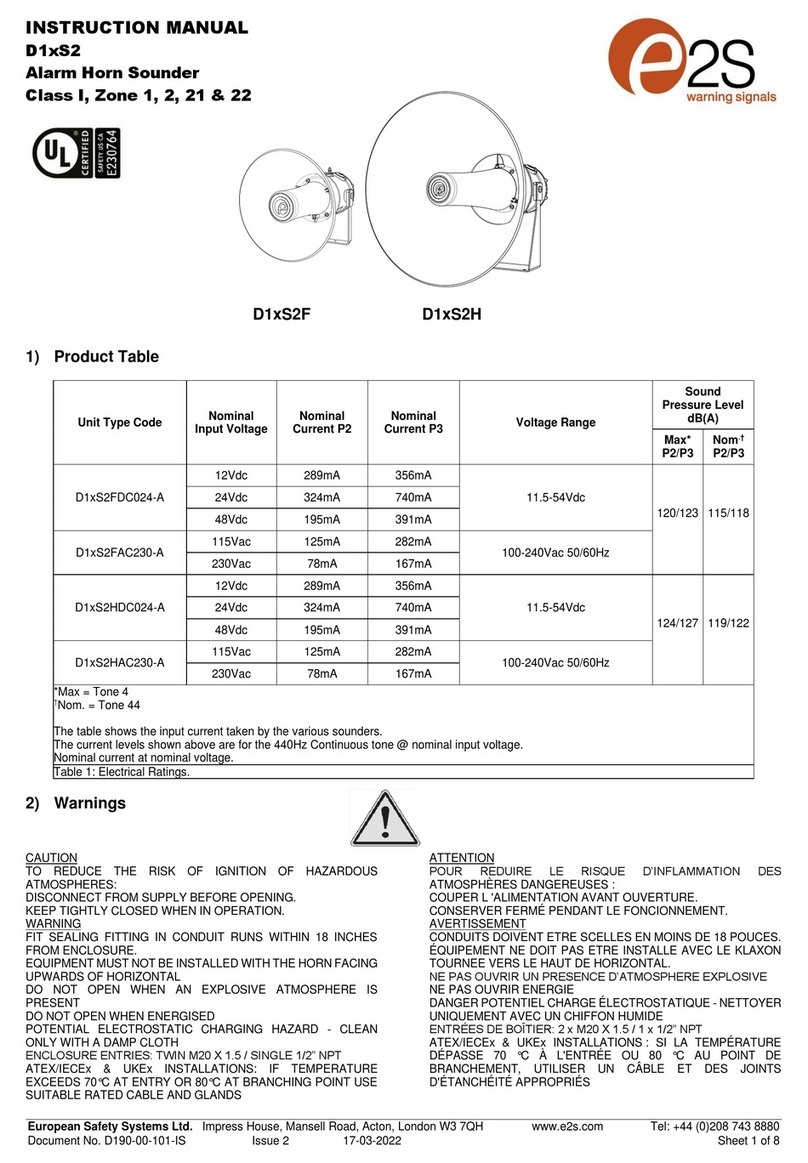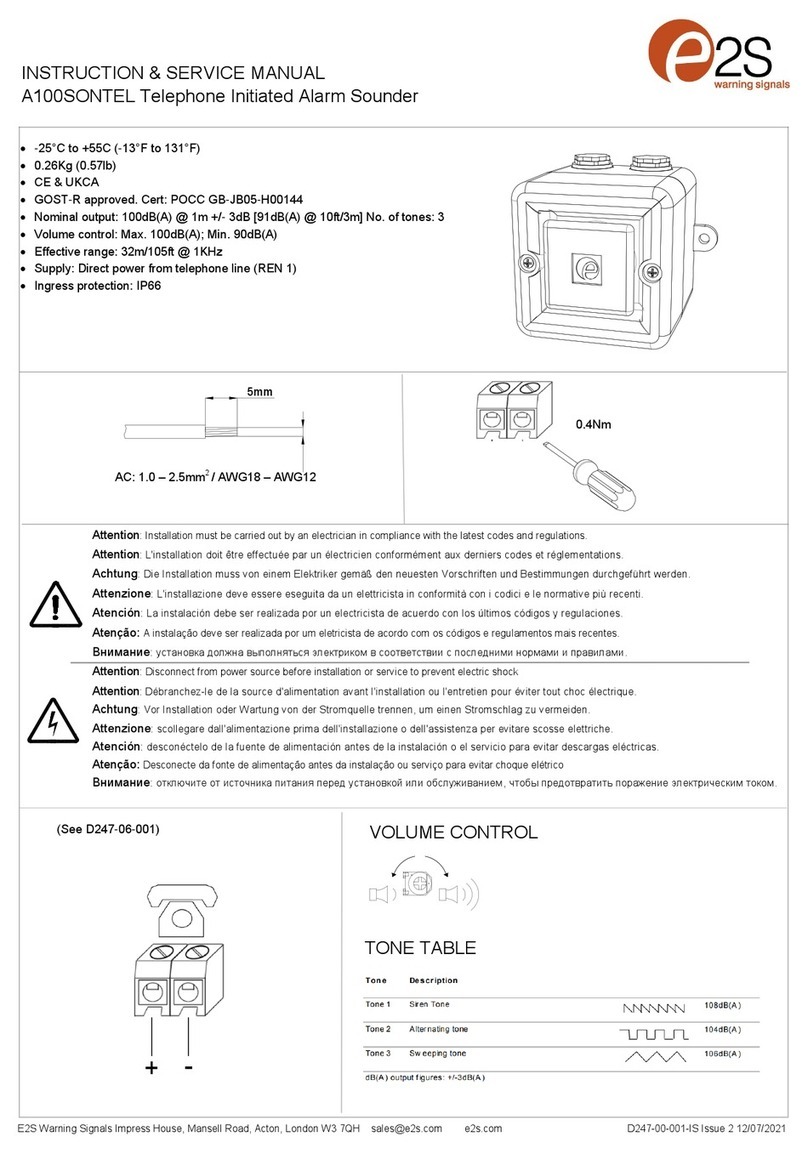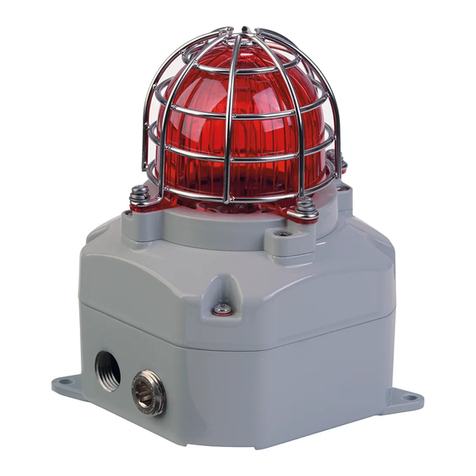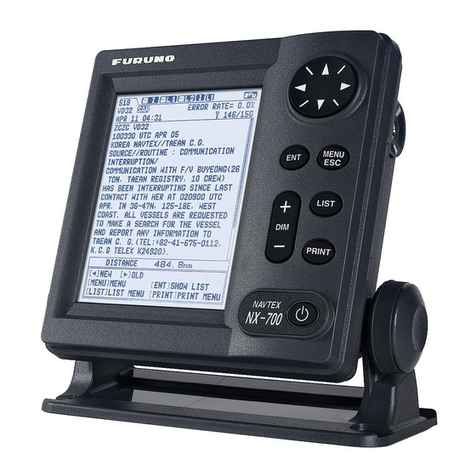_______________________________________________________________________________________________________________________________
European Safety Systems Ltd. Impress House, Mansell Road, Acton, London W3 7QH sales@e2s.com Tel: +44 (0)208 743 8880
www.e2s.com Fax: +44 (0)208 740 4200
Document No. D199-00-001-IS Issue 2 04-01-21 Sheet 2 of 8
The sounder carries an EC Type Examination Certificate and
IECEx Certificate of Conformity, and have been certified to
comply with the following standards:
EN60079-0:2012+A11:2013 / IEC60079-0:2011 (Ed 6):
Explosive Atmospheres - Equipment. General requirements
EN60079-1:2014 / IEC60079-1:2014 (Ed 7): Explosive
Atmospheres - Equipment protection by flameproof
enclosures "d"
EN 60079-31:2014 / IEC 60079-31:2013 (Ed 2): Explosive
Atmospheres - Equipment dust ignition protection by
enclosure "t"
4) Installation Standards
The sounder must only be installed by suitably qualified
personnel in accordance with the latest issues of the relevant
standards:
EN60079-14 / IEC60079-14: Explosive atmospheres -
Electrical installations design, selection and erection
EN60079-10-1 / IEC60079-10-1: Explosive atmospheres -
Classification of areas. Explosive gas atmospheres
EN60079-10-2 / IEC60079-10-2: Explosive atmospheres -
Classification of areas. Explosive dust atmospheres
The installation of the units must also be in accordance with
any local codes that may apply and should only be carried out
by a competent electrical engineer who has the necessary
training.
5) Special Conditions of Use
Repair of the flamepath / flameproof joints is not permitted.
The plastic horn is not anti-static and the metallic enclosure
has a non-conductive coating. These may generate an
ignition-capable level of electrostatic charges under certain
extreme conditions. The user should ensure that the
equipment is not installed in a location where it may be
subjected to external conditions that might cause a build-up of
electrostatic charges on non-conducting surfaces.
Additionally, cleaning of the equipment should be done only
with a damp cloth.
6) Location and Mounting
The location of the sounder should be made with due regard
to the area over which the warning signal must be
visible/audible. They should only be fixed to surfaces that can
carry the weight of the unit.
The sounder should be secured to any flat surface using the
three 7mm fixing holes. The angle can then be adjusted as
required but the mounting restrictions must be observe. See
Fig 1d. This can be achieved by loosening the two large
bracket screws in the side of the unit, which allow adjustments
in steps of 18°. The enclosure provides IP66 protection and is
suitable for installation in exterior locations providing it is
positioned so that water cannot collect in the horn, and the
cable entry is sealed. See figure 1.
Fig 1a. Fixing Location for Small Horn
Fig 1b. Fixing Location for Large Horn
Fig. 1c Fixing Locations for Radial Horn
Fig. 1d Mounting Restrictions
7) Access to the Flameproof Enclosure
In order to connect the electrical supply cables to the sounder
it is necessary to remove the flameproof cover to gain access
to the flameproof chamber. To access the Ex d chamber,
loosen the M4 grub screw on the sounder cover. Open the
enclosure by turning the sounder cover counterclockwise and
remove the cover, taking extreme care not to damage the
flameproof threads in the process (See figure 2).
